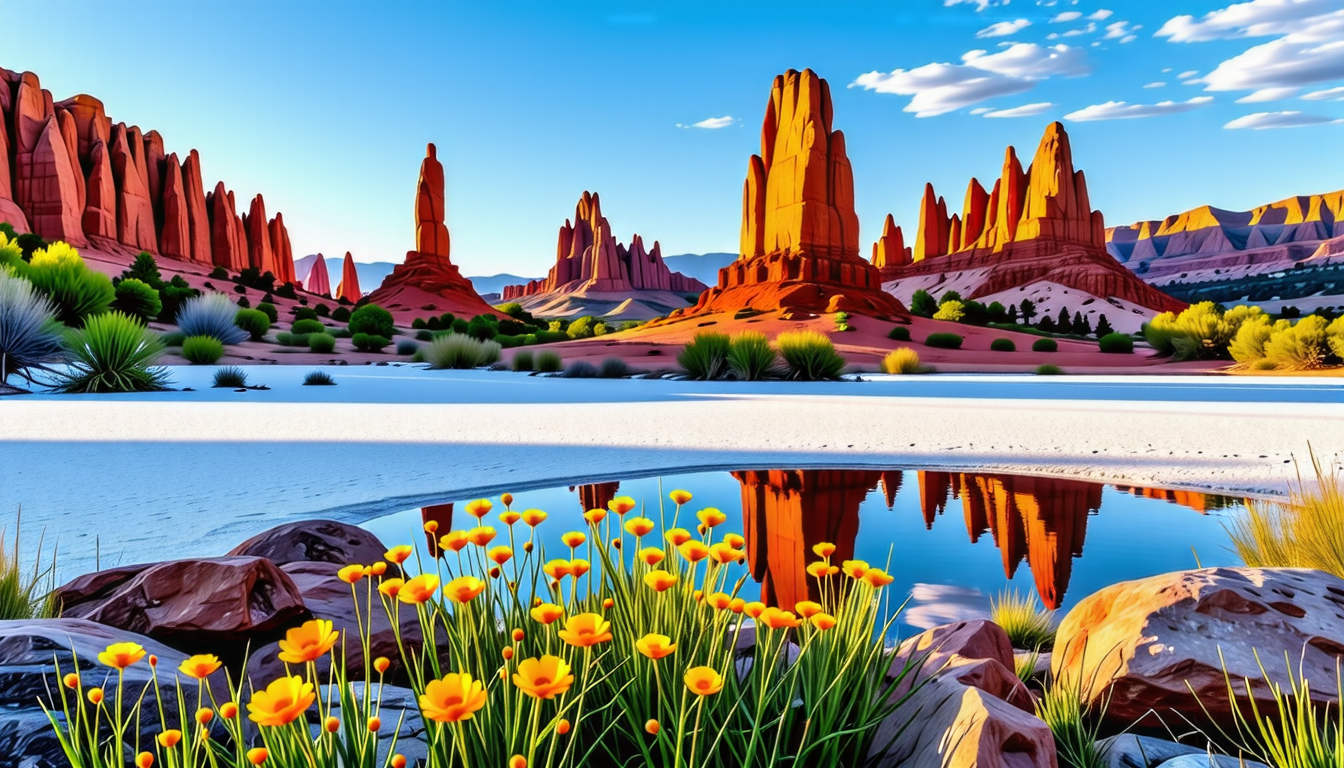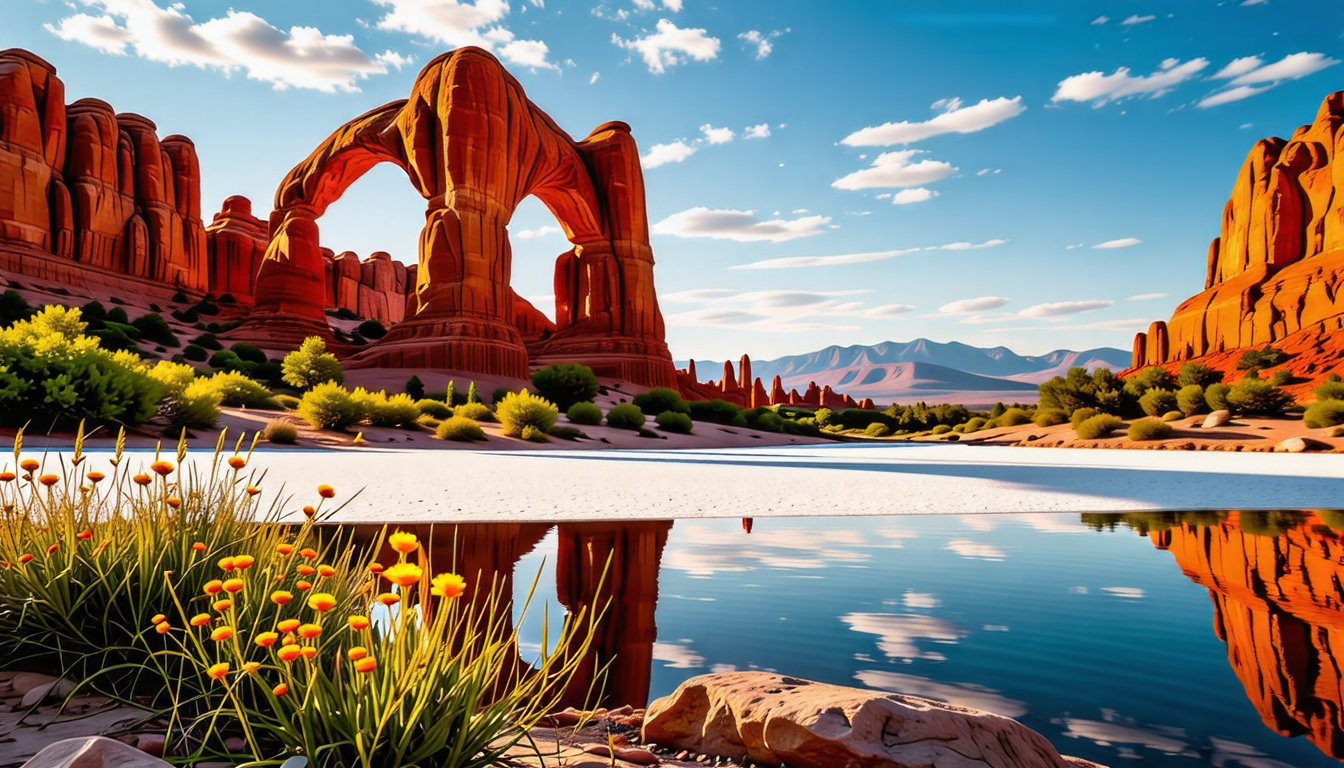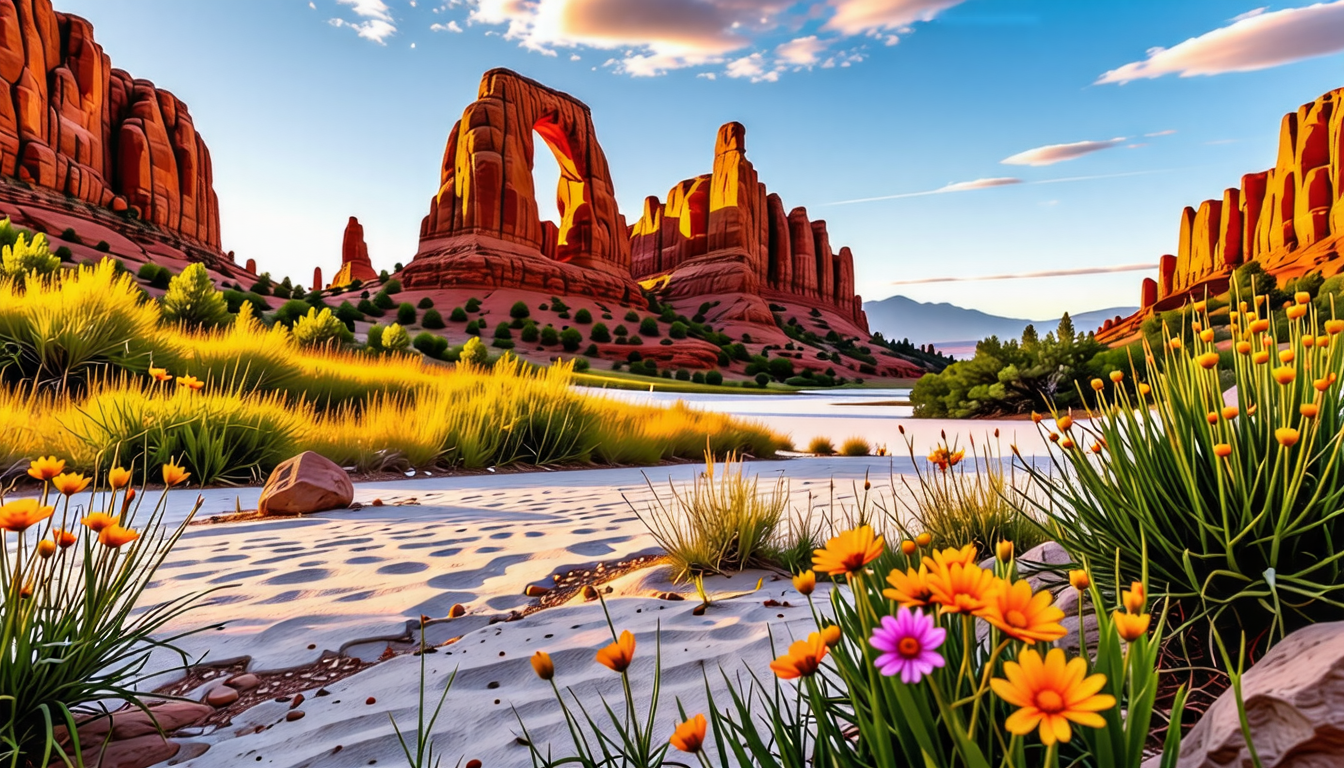|
IN BRIEF
|
Utah, a land where nature paints on a colossal canvas, captivates all who venture into its embrace. This extraordinary state showcases a kaleidoscope of landforms, where snow-capped mountain peaks rise majestically and the vast red deserts stretch endlessly beneath azure skies. Each corner of Utah whispers the tales of time, as ancient geological wonders blend seamlessly with vibrant forests, shimmering lakes, and snaking rivers. From the rugged Rocky Mountains to the arid expanses of the Great Basin Desert, this state offers a visual symposium of diversity that reflects both ecological and historical significance. Explore the hidden gems and harmonies of Utah’s landscape, where every vista unveils a new chapter in nature’s timeless story.

Utah is a state renowned for its breathtaking natural beauty and geological diversity. This vast region showcases a variety of landscapes that range from snow-capped mountain peaks to expansive deserts. Each of these areas has a unique character shaped by both climate and geological processes. Exploring the distinct features of Utah’s terrain allows us to appreciate the intricate tapestry of its natural wonders.
Enhancing the Visitor Experience
Local guides and organizations frequently offer tours and educational experiences that enhance visitor understanding of these landscapes. Such engagements allow for deeper exploration and appreciation, enriching the connection between people and the land. By sharing knowledge and experiences, they also foster a spirit of stewardship and responsibility toward maintaining these incredible ecosystems.
In summary, Utah’s diverse landscapes embody a unique blend of geological wonders, ecological richness, and cultural heritage. Each region tells a story, inviting both residents and visitors to delve into its profound beauty.
Wildlife and Flora
The ecological diversity of the Rocky Mountains is remarkable. The region is home to ponderosa pines, aspen trees, and a unique assortment of wildflowers, which bloom during the warmer seasons. The area serves as a sanctuary for various animals, including moose, elk, and black bears. This vibrant ecosystem flourishes, illustrating nature’s resilience and adaptability.

To truly appreciate the diversity of Utah’s landscapes, one must explore its three primary geographical regions: the Colorado Plateau, the Basin and Range, and the Middle Rocky Mountains. Each area exhibits unique geological formations and ecosystems, influencing everything from flora to fauna.
For instance, the southern region is characterized by its stunning buttes, slot canyons, and famous arches like those found in Arches National Park. Interestingly, Utah boasts over 2,000 natural stone arches, more than any other place on Earth. Meanwhile, the Great Basin and Mojave Deserts are home to unique ecosystems that adapt to arid conditions, showcasing remarkable species of plants and animals.
Additionally, recognizing the climate variations across the state is crucial. Northern Utah experiences cold winters, while the south enjoys warmer temperatures year-round. Thus, outdoor activities like hiking, skiing, and camping can be enjoyed in various forms throughout the year. Engaging with these landscapes fosters an understanding of Utah’s rich geological history and contemporary environment.

Utah stands as a vibrant showcase of natural beauty, where each corner reveals a different chapter of Earth’s story. From the towering peaks of the Rocky Mountains to the arid expanses of the Great Basin Desert, the state’s geographic diversity captivates all who venture into its embrace. The myriad landscapes, including lush forests and mesmerizing red rock formations, highlight the complex interplay of climate and geology, shaping unique ecosystems that support an array of flora and fauna. This magnificent blend of elements showcases nature’s artistry, inviting exploration and inspiring awe. As one delves deeper into this rich tapestry, the profound connection between Utah’s landscapes and its ancient history unfolds, beckoning adventurers and nature enthusiasts alike.
FAQ
What types of landscapes can be found in Utah?
R: Utah showcases an impressive variety of landscapes, including snow-capped mountain peaks, lush forests, expansive lakes, winding rivers, and vast, stunning red deserts. Each area presents a unique aspect of the state’s diverse geography.
How did Utah’s unique topography form?
R: The topography of Utah is shaped by the convergence of three principal physiographic provinces: the Colorado Plateau, the Basin and Range, and the Middle Rocky Mountains. This geological interplay has crafted a remarkable and varied landscape.
What climatic factors affect Utah’s ecosystems?
R: Utah’s climate varies greatly across its regions, greatly influencing its flora and fauna. Factors such as altitude, proximity to bodies of water, and desert conditions lead to the creation of unique ecosystems and diverse habitats throughout the state.
What are some key features of southern Utah’s landscapes?
R: Southern Utah is known for its enchanting landscapes, filled with buttressed cliffs, striking buttes, and deep slot canyons. Visitors can marvel at natural arches, delicately balanced pinnacles, and the vibrant hues of slickrock formations.
How can visitors appreciate Utah’s diverse landscapes responsibly?
R: To responsibly enjoy Utah’s diverse landscapes, visitors are encouraged to engage with environmental stewardship. This includes understanding the ecological sensitivities of various locations, following designated trails, practicing Leave No Trace principles, and supporting local conservation efforts.

